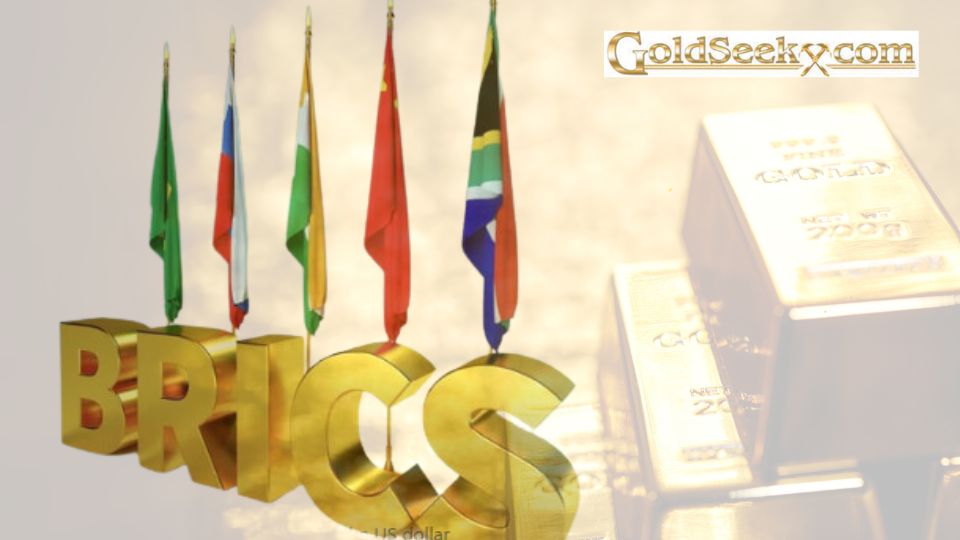
- China takes up over two-thirds of all the annual production…That’s where the gold price is set.
- During the first two months of 2024, China imported 367 metric tons of gold for non-monetary use. That was a 51 percent increase from the same period in 2023. Gold jewelry, coins, and bullion sales in China rose 24 percent year-over-year.
- The People’s Bank of China has been gobbling up gold for over a year. The central bank has expanded its gold reserves for 16 straight months, adding over 300 tons of the yellow metal to its stash since it resumed reporting gold purchases in October 2022. At the same time, the Chinese central bank has been dumping U.S. Treasuries.
- “China and the other BRICs continue to actively convert their central bank reserves into gold bullion, accounting for most of the world’s annual gold output. And continue to plan and develop their alternative intergovernmental financial systems.”
- The BRICS countries have expressed a desire to move away from dependence on the dollar. During last year’s BRICS summit, Brazil President Luiz Inacio Lula da Silva called on the bloc to create a common currency for mutual trade and investment.
- Gold could underpin a new currency to challenge dollar dominance.
Could the movement of gold from West to East set the stage for a gold-backed currency?
Some analysts think that might be the case.
And if that is the direction the world is heading, it would be disastrous for the U.S. dollar.
The impact remains unclear, but there is no doubt that gold’s axis is moving to the East - particularly China.
Franco-Nevada Corp. Chairman Emeritus Pierre Lassonde said the world needs to wake up to this fact.
“The marginal buyer of gold is no longer the U.S. It’s no longer Europe. It’s China. … China takes up over two-thirds of all the annual production…That’s where the gold price is set.”
Chinese gold demand has surged in recent months. Wholesale demand in China set a record in January. Assets under management by Chinese gold-backed ETFs also hit an all-time high.
During the first two months of 2024, China imported 367 metric tons of gold for non-monetary use. That was a 51 percent increase from the same period in 2023. Gold jewelry, coins, and bullion sales in China rose 24 percent year-over-year.
Meanwhile, the People’s Bank of China has been gobbling up gold for over a year. The central bank has expanded its gold reserves for 16 straight months, adding over 300 tons of the yellow metal to its stash since it resumed reporting gold purchases in October 2022. At the same time, the Chinese central bank has been dumping U.S. Treasuries.
Chinese and more generally Asian gold demand has helped drive the recent gold bull market. Even with the recent correction, gold has gained about 17 percent since mid-February.
As with any market rally, there are numerous reasons behind it. But Western reporters haven’t talked much about gold demand in the East. They have focused on the likelihood of Federal Reserve interest rate cuts and haven buying due to geopolitical tensions in the Middle East.
But as Walter Downey pointed out in an article published by Savvy Street, none of this is exactly new. And perhaps more interesting is the fact that the price of gold managed to hold ground at around $2,000 an ounce for several years despite fierce headwinds, including rising interest rates.
Chinese and Asian gold demand undoubtedly contributed to gold’s relative success despite headwinds.
And that reveals a significant shift – China has become the dominant player in the gold market.
The Rise of BRICs
China isn’t alone. The country is part of an economic bloc growing in size and influence.
BRICS is an economic cooperation bloc originally made up of Brazil, Russia, India, China, and South Africa. As of Jan. 1, 2024, the bloc expanded to include Saudi Arabia, Egypt, the UAE, Iran, and Ethiopia.
More than 40 other nations have expressed interest in BRICS membership.
The expanded BRICS has a combined population of about 3.5 billion people. The economies of the BRICS nations are worth over $28.5 trillion and make up roughly 28 percent of the global economy. BRICS nations also account for about 42 percent of global crude oil output.
The BRICS countries have expressed a desire to move away from dependence on the dollar. During last year’s BRICS summit, Brazil President Luiz Inacio Lula da Silva called on the bloc to create a common currency for mutual trade and investment. He said a BRICS currency would "increase our payment options and reduce our vulnerabilities."
Recently, Kremlin aide Yury Ushakov announced that the BRIC nations plan to develop a new payment system based on the blockchain.
Gold could underpin a new currency to challenge dollar dominance.
Downey asks the operative question.
“Can China wake up the world one morning with the announcement that there is a new currency now, backed by gold and perhaps even redeemable for gold? Or, alternatively, the Yuan, backed by gold, is now the official currency of the 43(?) BRICS-Plus nations, who will be banking, denominating their debt, conducting trade, and doing other economic and financial business in that currency?”
Most analysts don’t believe the dollar is in imminent danger. Even with aggressive de-dollarization, the greenback still dominates global trade. And while its share has diminished marginally in recent years, the dollar remains the dominant reserve asset.
But as the saying goes, things happen slowly and then all at once. Make no mistake, China and other BRIC nations are slowly working to diminish dollar dominance, as Downey notes.
Story by Mike Maharrey - Redacted shorter to keep to important points and bullet points added by HGG https://goldseek.com/article/could-shift-gold-west-east-set-stage-new-gold-backed-currency



